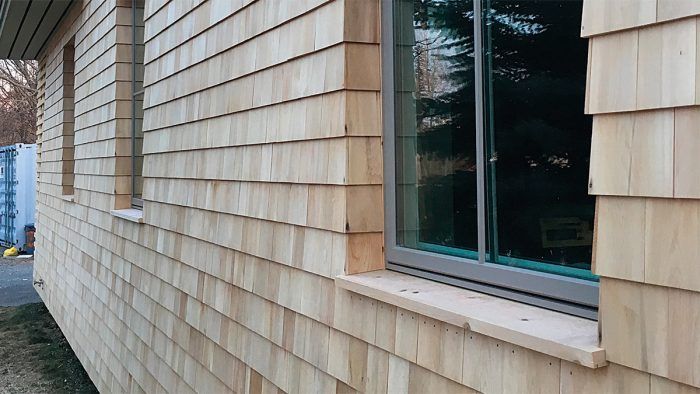Within reason, I want to build my house in the most energy efficient way possible. Traditionally most homes in the southern United States have been built standard 2x4 construction used in most homes in the southern United States. One simple alternative to traditional 2x4 construction is using 2x6's instead. It gives you an extra two inches of space to add insulation.
That extra space allows you to use R-19 insulation instead of R-13. That works out to be actual R-values of 11.8 and 15.8 respectively. It also allows more space to ensure you have a solid, undisturbed layer of insulation against the exterior wall after accounting for all the pipes and wires running through the wall. For example, with 2x4 construction, every standard electrical outlet box, which are 1 ½ inches thick, only has room for about 2 inches of insulation behind them.
2x6 framing is part of a larger concept of advanced framing techniques. There are other parts to advanced framing like single top plates, two stud corners, no jack studs, no cripples and single headers. I don't even know what some of those mean and will have to explore those in a separate blog post.
There is an argument to be made for using 2x4's but having two inches of continuous exterior insulation on the outside of the framing. That gives a better R-value than 2x6s. The challenge there is finding a framing crew that knows how to do continuous exterior properly. Because I'm in-experienced myself, I prefer to stay with options like 2x6 construction that framing crews are comfortable with.
There are two additional benefits that I like with 2x6s t -- recessed windows and doors and increased sound proofing. Personally, I like those enough to not be too worried about how long the payback period is, but there are some things to consider with each of these however.
Recessed Windows and Doors



The extra thickness from 2x6's allows for a deeper window well. It think it looks better; more polished. There is a downside however with recessed windows. These recessed windows can be prone to leakages if not installed correctly. There is a good Matt Risinger video explaining the issue and ways to solve it. Also, look into these ThermalBuck insulated window bucks.
Increased Sound Proofing
This one I'm not so sure about. It seems intuitive that the extra two inches of insulation would increase the sound dampening capability, but I'd like to see some data on it. How sound dampening is insulation anyway? From this article at Noise Help, it says about insulation:
Loosely packed fiber provides excellent sound absorption, which is a factor in soundproofing, albeit a minor one. Standard fiberglass insulation is as effective as mineral wool, and much less costly. Foams give great thermal insulation but are actually poor for soundproofing.
I want to note the last sentence there about foam insulation being poor for soundproofing.
This article from Trademark Soundproofing provides some hard data. They cite a study from Orfield Labs where two similar 5/8 drywall walls, one with R13 fiberglass insulation and one with no insulation. The wall with insulation only improved 3 points in STC rating.
The article also says this in regard to insulation:
Often it is thought that using denser insulation is the cure-all to sound problems. But this simply isn't the case. In general, it is preferable to use standard building type insulations (i.e., normal fiberglass) and it is never desirable to utilize expensive, very dense insulations, as in addition to the expense, they tend to make low frequency performance worse by raising resonance frequencies.
To imagine how insulation becomes less effective as frequency falls, think of this experiment: place fiberglass in front of the mid/high frequency speakers in your room, and listen to what happens. The sound will probably be very muffled and muted. Now put the same fiberglass in front of the subwoofer cones - nothing happens. So it goes with walls.
So I'm not so sure of how much actual extra sound proofing I'll get with the extra two inches of insulation. If the house rattles less when you shut the door, that's probably enough for me.
Cost Differences in Approaches
More to come here with actual numbers when I get estimates.
